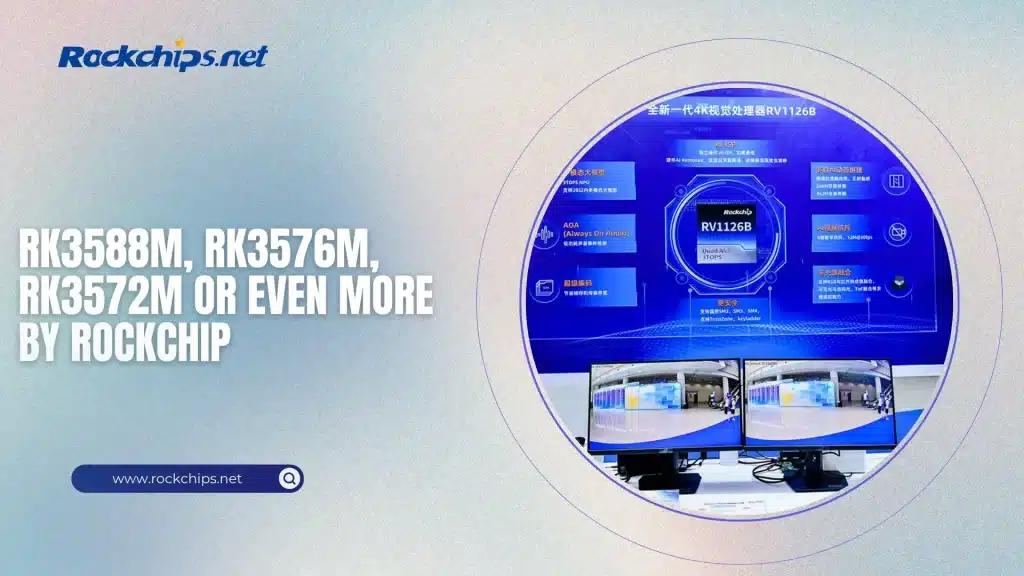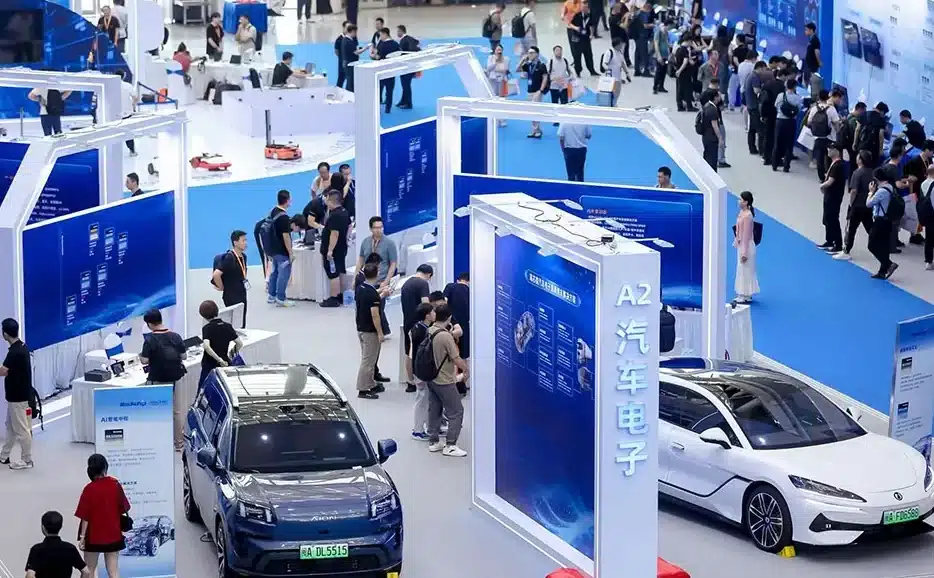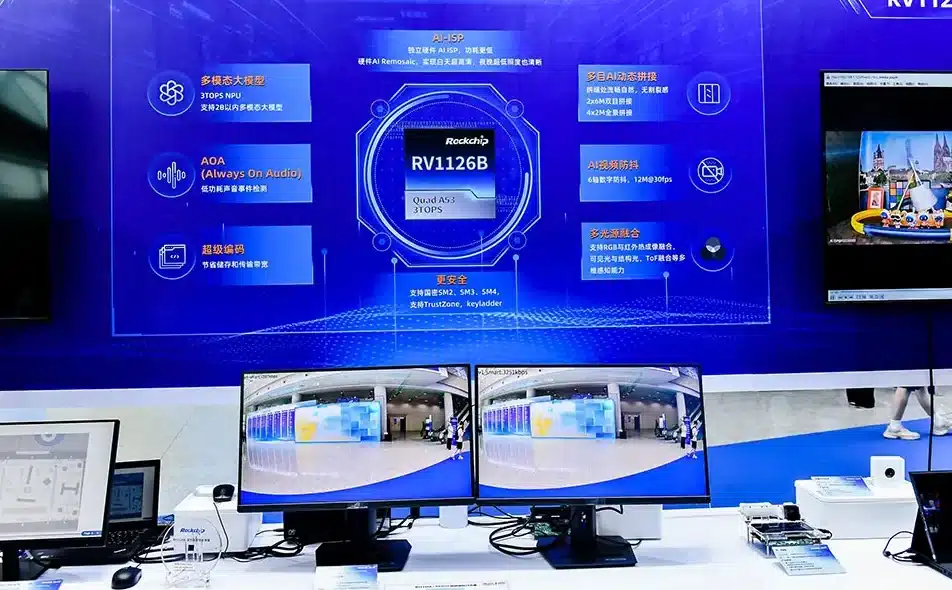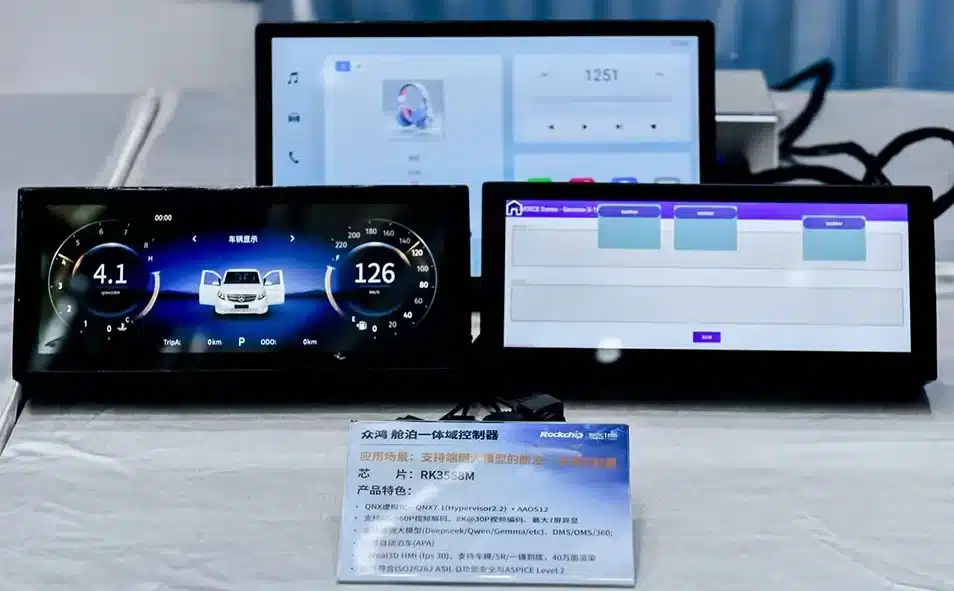
At the 9th Developer Conference, Rockchip Electronics Co., Ltd. (“Rockchip“) showcased its latest innovations in six key automotive electronics segments, unveiling a comprehensive product and technology roadmap designed to accelerate the intelligent transformation of vehicles worldwide.
The company’s all-scenario solutions — spanning smart cockpits, edge AI coprocessors, in-vehicle audio, full-LCD instrument clusters, advanced vision systems, and high-speed interface chips — were developed in collaboration with ecosystem partners. Together, they form a robust foundation that integrates cutting-edge chipsets, evolving hardware-software platforms, and an open ecosystem to empower OEMs and Tier 1 suppliers to bring next-gen automotive experiences to market faster.

1. Smart Cockpits: Multi-Screen Immersion and Seamless Interaction
Rockchip’s RK-M series automotive-grade SoCs now cover a full spectrum of performance tiers, supporting central control units, entertainment domain controllers, smart cockpits, cockpit + L2 systems, and integrated cockpit-parking platforms. Leveraging the mature AIoT supply chain, Rockchip is also enabling projection and tablet-class devices to enter the vehicle domain.
Flagship Lineup:
- High-Performance — RK3588M, RK3576M, RK3572M: Optimized for central control, instrument clusters, entertainment screens, HUDs, DLP systems, and in-vehicle vision. Strong IP and software compatibility reduce development time while supporting on-device AI large models, lightweight L2 ADAS, and APA parking.
- Next-Gen Flagships — RK3688M (300K DMIPS+) and RK3668M (200K DMIPS+): Built on advanced process nodes for maximum performance.
- Localized SoC — RK3568M: For central control with surround view or compact domain controllers.
- Entry-Level — RK3358M: Ideal for cost-sensitive cockpit components like armrest or headrest displays.
A dual-RK3588M entertainment domain controller took center stage at the show, supporting up to nine screens, integrating 8MP HDR cameras with multi-frame noise reduction, and enabling ultra-low-latency (50ms) gaming via DP-in. PCIe 3.0 cascading expands application possibilities.
Rockchip also demonstrated an AI-powered integrated cockpit-parking controller built on the RK3588M with QNX Hypervisor, custom architecture for resource efficiency, and deep AAOS integration. On-device AI fuses voice, vision, and touch inputs, using a scene-aware engine to proactively deliver personalized in-vehicle services.

2. Edge AI Coprocessors: The Compute Hub for Next-Gen Cabins
To meet the growing need for AI inside vehicles, Rockchip has launched the RK182x series of AI chips. These chips are designed to be fast, efficient, and adaptable.
These processors integrate high-bandwidth on-chip DRAM and multi-core NPUs optimized for 3B/7B LLM and VLM workloads, supporting mainstream frameworks and providing developer-friendly APIs. They can run standalone or in tandem with any SoC brand — enabling OEMs to retrofit large-model AI capabilities into existing platforms or complement new designs where bandwidth, thermal limits, or cost are challenges.
3. In-Vehicle Audio: From Hardware to AI-Driven Sound Experiences
Rockchip continues to lead in end-to-end audio technology, extending its expertise from consumer devices to automotive. Its fully localized DSP + Codec + PA solutions come with the no-code RKStudio_Tool and built-in proprietary algorithms.
The RK2118M combines MCU + DSP + Audio NPU in a high-performance architecture, delivering advanced AI audio features like voice/music separation, low-latency ANC/RNC/ENC, ECNR, and spatial audio — widely adopted by OEMs and Tier 1s.
The newly introduced RK2116M streamlines the architecture while adding a 4TX4RX Codec and maintaining full software compatibility for easy migration. Combined with the RK730M Codec and RK751M 4-channel Class D amplifier, Rockchip offers a one-stop AI digital acoustics platform.

4. Full-LCD Instrument Clusters: 3D Graphics, Safety, and Speed
With NOA (Navigate on Autopilot) evolving rapidly, full-color 3D instrument clusters are becoming standard. Rockchip’s RK3358M SoC provides a cost-effective, secure, and high-performance platform, shipping in volume to major automakers.
Its FuSa-Linux SDK enables 3-second cold boot, 3D-UI and 3D-SR graphics, ASIL-grade safety, 1920×720 HD output, dual-screen HUD support, and more.
5. In-Vehicle Vision: AI-Enhanced Perception from the Edge
The RV series vision chips support multi-camera inputs, AI-ISP, 2D processing, NPUs, and simultaneous encode/decode with display output. Rockchip’s Car-DVR Linux SDK enables sub-100ms snapshots, 1-second boot, and sentinel mode, with deployments across AI Car-DVR, MDVR, AEBS, CMS, and DSSAD applications.
The RV1126BM, Rockchip’s 5th-gen vision chip, boosts performance over its predecessor by 50%+, adding 12MP@30fps AI-ISP, 3TOPS NPU, hardware stabilization, and dual MCU. Demonstrations included automatic braking, palm-vein unlocking, EIS stabilization, and on-device large-model AI.

6. High-Speed Interface Chips: Bandwidth for the Intelligent Era
With the number of in-vehicle cameras and displays surging, Rockchip’s interface solutions — RK671M camera serializer, RK681M display serializer, and RK682M deserializer — deliver up to 5Gbps over COAX or STP/UTP via the proprietary RKLINK-I protocol.
They support BIST self-test, link diagnostics, packet retransmission, I2S audio, and low-speed pass-through, serving multi-camera, multi-display, and mixed transmission applications.
Driving the Future of Intelligent Vehicles
Rockchip’s automotive electronics are now deployed in over 100 vehicle models worldwide, spanning both passenger and commercial segments. As its roadmap expands and new products roll out, Rockchip is building a stronger automotive supply chain ecosystem to accelerate the global adoption of smart, connected vehicles.
Link: Chinese version